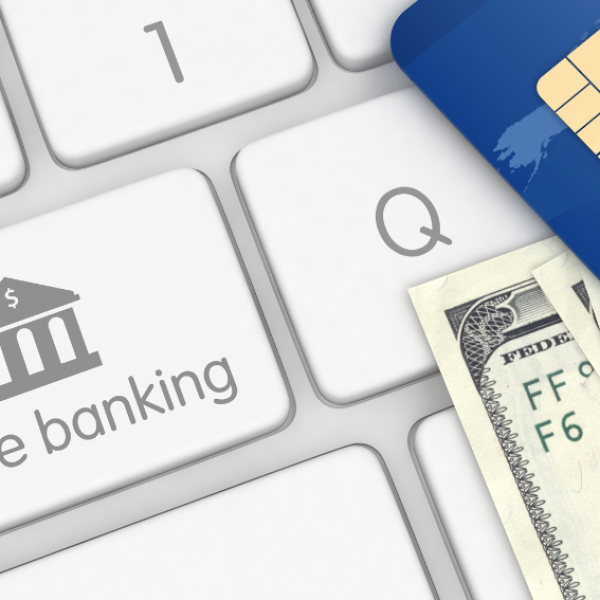Adopting efficient payment processing methods is no longer an option; it’s a necessity. One of the most widely accepted and beneficial methods is credit card payment processing. For both small and large businesses alike, the ability to accept credit card payments can streamline operations, enhance customer experience, and significantly boost revenue. Below, we explore the key benefits of credit card payment processing and why it is a must-have for modern businesses.
In This Article
Toggle1. Increased Sales Volume and Revenue
By integrating credit card payments, businesses are essentially broadening the scope of their customer base. Credit cards have become a preferred mode of payment for many, especially when it comes to purchases where the cost may exceed what they typically carry in cash. Customers often find credit cards more convenient, particularly for higher-value transactions, and this preference directly translates into greater spending potential.
When consumers use credit cards, they tend to purchase more compared to cash transactions. With credit cards, customers are not bound by the physical limitations of cash on hand or the processing time associated with checks. Studies indicate that average purchase amounts often increase when credit cards are used, with many consumers opting to add more items to their shopping cart, whether online or in-store.
Credit card acceptance also caters to the “spur-of-the-moment” purchase. For instance, a customer may not have initially intended to buy a certain item but, knowing they can use a credit card, decides to add it to their purchase. This impulsive behavior is much easier to facilitate with a credit card, as it removes the friction of considering available funds in real time.
Online businesses particularly benefit from accepting credit cards, as the option removes obstacles that could hinder a purchase. Without credit card options, many online customers might abandon their cart if they find the payment process inconvenient. Thus, credit card payment processing is integral for increasing both the volume and value of sales transactions, resulting in a noticeable increase in revenue.
2. Enhanced Customer Convenience and Satisfaction
Credit card payments provide a level of flexibility that meets modern consumer expectations. This convenience factor has become a standard for businesses of all sizes, from small boutiques to large retailers and online shops. Offering a range of credit card options, such as Visa, Mastercard, American Express, and Discover, allows customers to use their preferred card, which makes the transaction more seamless.
Customer satisfaction is a key driver of repeat business, and convenient payment options play a substantial role in achieving it. With credit card payments, customers no longer have to worry about running to the ATM, counting cash, or carrying bulky wallets. They can simply swipe, tap, or enter their card details online, which expedites the purchase process and enhances their overall experience.
In the realm of eCommerce, credit card acceptance is indispensable. More consumers are shopping online now than ever before, and credit cards are the backbone of digital transactions. Businesses that fail to offer credit card payment options may lose customers to competitors that provide more flexible payment methods. Having multiple payment options, including credit cards, reduces the friction often associated with the checkout process, thereby decreasing cart abandonment rates and increasing customer satisfaction.
The inclusion of credit card payments also shows a business’s commitment to meeting the diverse needs of its clientele. By offering this flexibility, businesses signal that they value customer preferences, which can strengthen brand loyalty. Over time, this enhances customer retention as clients are more likely to return to businesses that prioritize their convenience.
3. Improved Cash Flow Management

For businesses, maintaining consistent cash flow is vital for smooth operations. One of the major benefits of credit card payment processing is the speed with which transactions are settled. With traditional payment methods like checks, the funds transfer can take days to weeks, causing delays in accessing revenue. Credit card payments, in contrast, typically settle within one to two business days, allowing businesses to access funds quickly.
This expedited cash flow is particularly beneficial for small and medium-sized businesses that need to manage their operational costs closely. For instance, small manufacturers or local service providers can utilize the prompt cash flow from credit card payments to reinvest in their business activities. They can reorder inventory sooner, pay their employees on time, or allocate funds toward growth initiatives without waiting for checks to clear.
With credit card payments, businesses can improve their liquidity, which can be essential for managing unexpected expenses. Faster cash flow also provides businesses with greater control over budgeting, as they are not at the mercy of delayed or unpredictable cash deposits. This consistency helps small businesses remain competitive, as they can quickly adapt to changing demands without cash flow constraints holding them back.
Additionally, the predictable nature of credit card payments aids in financial forecasting. Businesses can rely on regular deposits and better track their cash flow, simplifying the process of financial planning. Knowing that they will receive funds within a few days allows business owners to make informed decisions and plan strategically for future investments, ensuring their long-term growth and stability.
4. Enhanced Security and Fraud Prevention
Security is paramount today, especially when it involves financial transactions. Credit card payment processing has evolved significantly to include advanced security measures that protect both businesses and their customers. Many payment processors now offer security features such as data encryption, tokenization, and multi-layered authentication to safeguard sensitive customer information.
Encryption converts sensitive information, such as credit card numbers, into an unreadable format during transmission, which protects it from interception. Additionally, tokenization replaces sensitive card details with a unique identifier or token, which holds no exploitable value if intercepted. Tokenization has become a critical part of modern credit card processing, as it adds an extra layer of protection by ensuring that the actual card information is stored securely away from the point of transaction.
Many credit card processors also comply with industry standards like PCI DSS, which establishes best practices for data security. This compliance ensures that businesses using these payment processors are adhering to high-security standards, minimizing the risk of data breaches and other cyber threats. As cyberattacks become more sophisticated, having a PCI-compliant processor can significantly reduce a business’s vulnerability to fraud.
A trusted credit card payment processor offers these security protocols as a standard feature, helping businesses maintain a secure transaction environment. In addition to protecting customer data, these security measures also safeguard the business’s reputation. A data breach can lead to significant financial and reputational damage, but with a secure credit card processing system in place, businesses are better equipped to prevent such incidents.
By choosing a secure credit card processor, businesses demonstrate to customers that their data protection is a top priority. This commitment to security fosters trust, which is essential for maintaining strong customer relationships. In an age where data privacy concerns are paramount, businesses that prioritize secure transactions are more likely to gain customer loyalty and build a positive reputation in their industry.
5. Simplified Record-Keeping and Financial Management
Credit card payment processing brings simplicity and accuracy to financial record-keeping. When businesses rely on cash transactions, tracking daily revenue, expenses, and reconciling accounts can become labor-intensive and prone to human error. However, with credit card payments, each transaction is automatically documented in a digital system, which provides a reliable, easily accessible record of every sale.
This feature is particularly beneficial for small businesses and startups that may not have dedicated accounting departments but still need a clear picture of their financial health.
Many credit card processing providers offer online dashboards and reporting tools that categorize expenses, record daily totals, and generate month-end statements. This means business owners or their accountants can log in and review revenue trends, peak sales periods, and even analyze customer demographics based on purchase data. These insights can be integrated into accounting software, creating a streamlined flow from sales data to financial reports.
For example, a restaurant could analyze its credit card transaction data to identify which menu items are most popular and when peak dining times occur. This information could guide decisions on inventory purchases, staffing schedules, and promotional offers. Similarly, a retail business might track credit card sales data over time to understand seasonal trends and adjust inventory orders accordingly.
The depth of analysis that credit card data provides can give business owners a clear, data-driven foundation for making operational decisions.
Additionally, digital records make it easier to comply with tax regulations. At tax time, having organized, digital records simplifies the process of reporting income, calculating sales tax, and claiming deductions. By eliminating the manual aspect of tracking every cash transaction, credit card processing reduces the potential for reporting errors and streamlines financial management, making it more accurate and efficient.
6. Increased Market Reach and Online Sales Potential
In today’s digital age, having an online presence is often as crucial as having a physical storefront. Credit card payment processing opens up this realm of opportunity, allowing businesses to reach a wider audience. Credit cards are universally accepted online, making it easy for businesses to serve customers far beyond their local area. By accepting credit cards, businesses can establish eCommerce websites or participate in online marketplaces, tapping into new customer segments and increasing their revenue potential.
For a small business, this can mean exponential growth. Take a local artisan bakery, for instance. Previously limited to foot traffic, the bakery can now sell specialty items like gift boxes or holiday treats to customers across the country via an online store. By accepting credit card payments online, they provide a convenient shopping experience for customers who prefer the flexibility of paying from anywhere, at any time. This flexibility makes it possible to scale operations without the need for significant investments in physical infrastructure.
Furthermore, credit card payments support subscription models, allowing businesses to set up recurring payments for services or products that require regular replenishment. For example, a wellness company could offer monthly subscription boxes filled with health products, leveraging credit card payment processing to automate renewals and increase customer retention. In the competitive landscape of eCommerce, businesses that offer streamlined credit card payments are more likely to capture and retain customers.
Moreover, by expanding market reach through credit card payments, businesses also gain valuable insights into their customer base. Credit card transactions can be analyzed to track purchasing patterns, determine which regions are generating the most sales, and adjust marketing efforts to target high-potential areas. In effect, credit card acceptance not only drives more sales but also provides data to guide strategic growth decisions.
7. Competitive Advantage and Business Growth

Offering credit card payments can be a game-changer when it comes to standing out in the market. As more businesses embrace digital payments, customers expect the convenience and flexibility of paying by credit card. Failing to meet this expectation may place a business at a disadvantage, as customers may choose competitors that provide a wider range of payment options. Accepting credit card payments signals to customers that a business values their convenience, which can foster positive brand perception and loyalty.
In highly competitive industries, businesses that accept credit cards have the upper hand, particularly when it comes to marketing and promotional activities. With access to transaction data, businesses can create targeted campaigns, loyalty programs, and special offers that appeal to specific customer segments.
For instance, a boutique might run a “spend $100, get $10 off” campaign, rewarding repeat customers who make credit card purchases. This not only incentivizes higher spending but also promotes customer loyalty, contributing to long-term business growth.
Credit card processing also enables businesses to implement a variety of loyalty programs and rewards systems. For instance, cafes and restaurants often offer loyalty cards or membership programs that track purchases through credit card transactions, allowing customers to earn points or discounts. These programs encourage repeat visits, and credit card processing enables seamless integration of such rewards.
As businesses grow, credit card processing can support advanced features like customer relationship management (CRM). By linking credit card transactions with CRM tools, businesses can monitor customer preferences, purchase history, and engagement levels, allowing them to build deeper relationships with their clients.
This ability to personalize marketing and customer interactions drives engagement and fosters brand loyalty, creating a competitive advantage that directly supports business growth.
8. Integration with POS Systems for Streamlined Operations
Modern Point-of-Sale (POS) systems have evolved far beyond simple cash registers. With integrated credit card payment processing, today’s POS systems function as comprehensive business management tools, providing valuable capabilities that streamline operations and enhance efficiency. A POS system that supports credit card processing can unify payment processing, inventory management, sales tracking, and customer relationship management in one platform.
For instance, in a busy retail environment, employees can use the POS system to track inventory in real-time, alerting them when stock levels are low. The system can even generate automatic restocking orders to prevent shortages, allowing business owners to avoid missed sales due to out-of-stock items. With credit card transactions, the POS system records every sale instantly, so inventory counts remain up-to-date, and accounting records are accurate.
POS systems equipped with credit card payment capabilities also allow businesses to generate in-depth sales reports. These reports can break down revenue by product category, peak sales hours, and customer demographics, offering insights that can guide merchandising and marketing decisions. A restaurant, for example, might use POS data to identify its best-selling dishes, optimize menu offerings, and schedule staff based on peak hours, all of which contribute to a smoother, more profitable operation.
Integrated POS systems also help reduce manual tasks, saving time and resources. Rather than handling cash, calculating change, and keeping manual records, employees can process transactions quickly and focus on providing a positive customer experience. This efficiency improves employee productivity, reduces human error, and enhances the overall customer journey.
Moreover, with the ability to save customer information securely, POS systems can enable businesses to provide a more personalized experience. For example, a clothing store could save customer purchase history and preferences, allowing employees to make tailored product recommendations. These personalized interactions increase the likelihood of repeat purchases and build stronger customer relationships.
9. Access to Valuable Customer Insights and Analytics
Credit card processing systems are not only tools for completing transactions but also powerful sources of data. They often come with built-in analytics that allow businesses to understand customer behavior, track purchasing trends, and make data-driven decisions. By analyzing transaction data, businesses can identify their most popular products, peak sales periods, and customer demographics, all of which can inform strategies to improve offerings and increase profitability.
For instance, a retail clothing store might analyze credit card data to discover which product categories are top sellers during specific seasons. They could then use this information to stock up on high-demand items before peak sales periods, ensuring they meet customer demand and reduce the risk of stockouts. Additionally, credit card analytics can reveal which types of promotions are most effective in driving sales.
Suppose a restaurant finds that more customers are likely to use their cards on weekends. In that case, they could create weekend-specific offers or promotions to attract even more traffic during these times.
Beyond product and time-based insights, businesses can use transaction data to segment their customers and create targeted marketing campaigns. For example, a gym that accepts credit card payments might identify loyal customers who frequently purchase classes or memberships and reward them with loyalty discounts.
By personalizing offerings based on spending behavior, businesses can enhance customer satisfaction, build brand loyalty, and foster long-term relationships.
These insights extend to online and offline channels, giving eCommerce and brick-and-mortar businesses alike the ability to make strategic decisions based on reliable data. The ability to understand and act on customer behavior with precision allows businesses to be more agile, responsive, and customer-focused, positioning them for sustainable growth in competitive markets.
10. Compliance with Regulatory Standards
Data security and regulatory compliance are critical in today’s digital economy. Businesses that accept credit card payments are required to comply with Payment Card Industry Data Security Standard (PCI DSS), which ensures that sensitive payment information is handled securely. Partnering with a PCI-compliant credit card processor alleviates the need for businesses to manage complex security protocols on their own, as the processor typically provides built-in compliance solutions.
Credit card processors adhere to strict protocols like data encryption, secure authentication, and tokenization to protect consumer data during transactions. These measures are designed to prevent unauthorized access and reduce the risk of data breaches. For industries with stringent data security requirements, such as healthcare or finance, compliance is essential for maintaining customer trust and avoiding potential legal ramifications.
By using a PCI-compliant processor, businesses also minimize the risk of penalties for non-compliance. Failing to comply with PCI DSS can lead to costly fines and reputational damage if customer data is compromised. Using a compliant processor ensures that security measures like tokenization and end-to-end encryption are automatically applied to each transaction, safeguarding sensitive information and ensuring that the business adheres to industry standards without additional effort.
For businesses in highly regulated sectors, credit card processors often provide additional compliance support to meet specific regulatory standards. For instance, healthcare businesses processing credit card payments for services can rely on PCI-compliant processors to protect patients’ financial information, ensuring compliance with both PCI DSS and healthcare-specific regulations. This automated compliance feature streamlines business operations, reduces liability, and enables companies to focus on their core activities with peace of mind.
11. Future-Proofing with Advanced Payment Options

The payments landscape is evolving rapidly, with consumers increasingly adopting digital wallets, mobile payment apps, and contactless payment options. Credit card processors today are often equipped to handle these advanced payment methods, allowing businesses to stay ahead of emerging payment trends and cater to customers’ growing demand for convenient, technology-driven payment options.
For instance, digital wallets like Apple Pay, Google Wallet, and Samsung Pay are widely used by consumers who prefer not to carry physical credit cards. Contactless payment technology has also gained popularity for its speed and convenience. Businesses that offer these payment options not only enhance the customer experience but also position themselves as forward-thinking and adaptable. By accommodating customers’ preferred payment methods, businesses can reduce the risk of cart abandonment, especially for eCommerce transactions where customers expect a variety of payment options at checkout.
Moreover, offering these options can help businesses appeal to tech-savvy consumers, such as millennials and Gen Z shoppers, who value the convenience of making payments directly from their smartphones or wearables. Restaurants, cafes, and retail stores, for example, may find that younger consumers are more likely to return to businesses that support mobile and contactless payments.
The flexibility to accept various payment methods future-proofs the business by ensuring it is prepared to accommodate changes in consumer behavior. For example, a small boutique that incorporates contactless payments could maintain continuity even during times of health concerns, like a pandemic, by minimizing physical contact. In the same vein, eCommerce businesses that integrate digital wallet options may see higher checkout conversion rates from customers who prefer using saved payment methods in their wallets.
Future-proofing through advanced payment capabilities not only enhances the customer experience but also increases operational resilience. As more consumers gravitate towards digital payments, businesses that proactively embrace these technologies will be better positioned to attract and retain a diverse customer base, reduce transaction times, and provide a seamless and modern payment experience.
Conclusion
Credit card payment processing is not just a convenience; it’s a strategic asset. By adopting credit card processing, businesses can increase sales, enhance customer experience, improve cash flow, and streamline operations. From small retailers to large enterprises, the benefits of credit card payment processing extend across industries, providing the foundation for growth and competitive advantage.
Frequently Asked Questions
What is credit card payment processing?
Credit card payment processing allows businesses to accept card payments from customers, offering a convenient, fast, and secure method for transactions.
How does credit card payment processing benefit small businesses?
Small businesses benefit from faster cash flow, improved sales, and enhanced customer satisfaction. Credit card acceptance expands their reach and offers customers flexible payment options.
Is credit card payment processing secure?
Yes, modern processors use security features like encryption, tokenization, and PCI compliance to protect customer data, reducing the risk of fraud and enhancing customer trust.










